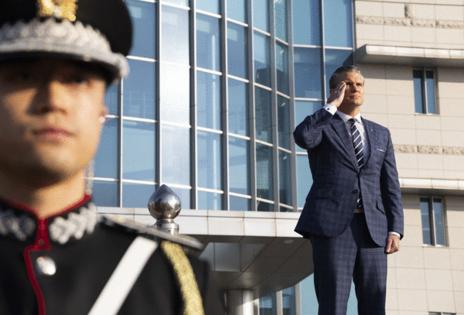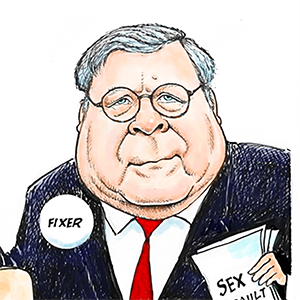Hegseth visits Korean DMZ as US bolsters security ties in Asia
Published in News & Features
SEOUL, South Korea — U.S. Defense Secretary Pete Hegseth visited the Demilitarized Zone dividing the Korean Peninsula on Monday afternoon, the last stop on his Asia trip aimed at deepening regional security ties to counter China and underscoring Washington’s commitment to Seoul.
Hegseth visited the so-called Joint Security Area in Panmunjom with South Korean Defense Minister Ahn Gyu-back, the first joint visit by the two nations’ defense chiefs since 2017. The stop came ahead of a key bilateral defense meeting in Seoul, where the allies are expected to discuss cooperation on nuclear-powered submarine development and long-term defense cost sharing.
Hegseth arrived after stops in Vietnam and Malaysia, a tour that closely followed President Donald Trump’s first visit to the region in his second term. The visits by top U.S. officials, including Secretary of State Marco Rubio and Treasury Secretary Scott Bessent, were aimed at bolstering U.S. ties in the region to counter Beijing while balancing Trump’s goal of rapprochement with Chinese leader Xi Jinping.
The U.S. defense secretary over the weekend said he agreed with his Chinese counterpart, Dong Jun, to set up military-to-military communication channels after they met in Kuala Lumpur. Hegseth also signed a 10-year defense deal with India, solidified defense ties with Malaysia, in the South China Sea and announced military exercises with Cambodia would resume for the first time in eight years.
Tensions over North Korea — and Trump’s interest in personal diplomacy with leader Kim Jong Un — had been a background issue during the U.S. leader’s Asia trip. Pyongyang intensified provocations in the days leading up to the Asia-Pacific Economic Cooperation summit last week hosted by the South, including a test of what it claimed was a new hypersonic missile system.
Kim has dismissed South Korean President Lee Jae Myung’s peace overtures and ruled out denuclearization talks, though he has left open the prospect of another summit with Trump. Kim’s renewed openness to talks with Trump underscores how North Korea is seeking to reframe diplomacy to cement its nuclear arsenal as permanent.
Hegseth’s visit to the DMZ comes as Trump has indicated he would consider returning to Asia for a meeting with Kim and lamented that he wasn’t able to talk to Kim during his latest trip due to scheduling conflicts.
While in South Korea, Trump and Lee finalized details of the $350 billion investment package, which is central to the trade agreement that capped American tariffs at 15%. The U.S. also approved South Korea’s request to build nuclear-powered submarines at an American shipyard, which Lee said would help Seoul track North Korean and Chinese vessels and ease the burden on U.S. forces.
Earlier during his visit in Malaysia, Hegseth voiced the administration’s serious concerns in talks with China’s Dong about Beijing’s naval activity around Taiwan and the South China Sea, citing its impact on U.S. security partners in the Indo-Pacific.
The U.S. defense chief is also expected to visit Camp Humphreys, the U.S. military’s largest overseas base, during his visit to Korea.
_____
©2025 Bloomberg L.P. Visit bloomberg.com. Distributed by Tribune Content Agency, LLC.







Comments